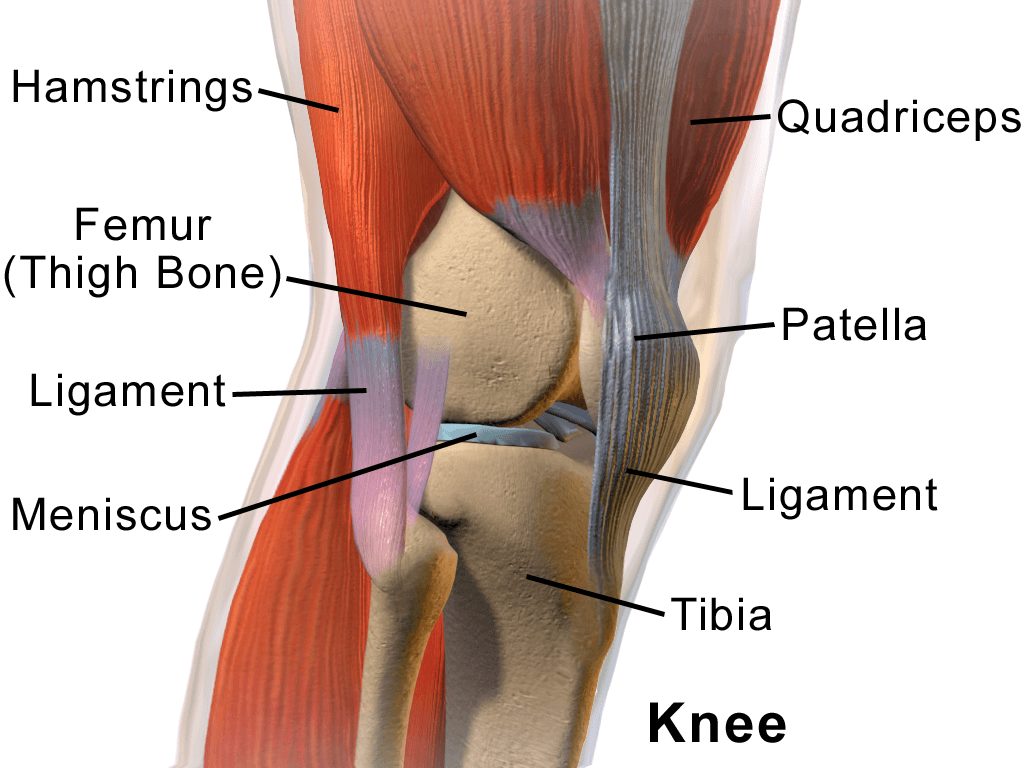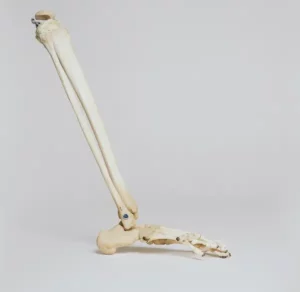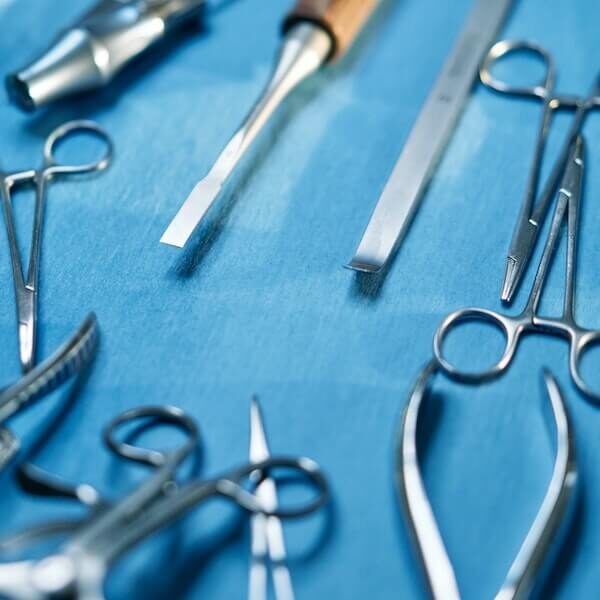Knee Ligament Injuries: Causes, Treatment and Recovery
Previously, we published a blog article looking at the function of the ACL in the Knee, knee ligament injuries, especially those affecting the Anterior Cruciate Ligament (ACL), are a common concern among individuals who engage in physical activities, sports, or lead an active lifestyle.
ACL injuries like ACL tears can cause severe knee pain, instability, and limit one's mobility. In such cases, reconstructive ACL surgery might be the best solution. In this blog, we will explore the overview of knee ligament injuries, preparation for surgery, and the recovery journey to help individuals make an informed decision about their treatment options.
Valiant Clinic & Hospital, a leading orthopedic clinic in Dubai, offers state-of-the-art treatments for knee ligament injuries. Our team of experienced surgeons and physiotherapists will guide you through the entire process and ensure that you receive the best care and rehabilitation.
Further Reading & Research

WORRIED ABOUT YOUR KNEE?
GET IN TOUCH
Quick Recap on How Knees Work

The knee is a complex joint with various parts working in harmony to allow movement.
The femur (thighbone) and tibia (shinbone) articulate with the patella (kneecap) to form the knee joint.
The major ligaments - anterior cruciate ligament (ACL), posterior cruciate ligament (PCL), medial collateral ligament (MCL), and lateral collateral ligament (LCL) - stabilize the knee.
The knee is a complex joint and various injuries can affect different parts of it. The most common knee injuries involve damage to the ligaments, which can include sprains or tears to the anterior cruciate ligament (ACL), posterior cruciate ligament (PCL), medial collateral ligament (MCL), and lateral collateral ligament (LCL).
HOW DEFICIENCY IN THE KNEE CAN IMPAIR QUALITY OF LIFE?
Knee ligament injuries, such as a torn ACL and PCL, can significantly impact one's quality of life, especially for individuals who lead active lifestyles. Impaired functionality of the knee can result in reduced mobility, pain, and discomfort, which can affect not only physical health but also mental wellbeing.
Research has shown that young adults who experience knee ligament injuries and leave them untreated may face long-term consequences. In particular, leaving injuries untreated can result in a higher risk of developing osteoarthritis and reduced athletic ability, even after undergoing surgery.
This impact on athletic ability is especially significant for young adults, as a lack of physical activity can lead to weight gain and other health complications, such as diabetes and heart disease. Moreover, the consequences of knee ligament injuries can also affect working individuals, who may need to take extended periods of time off work to recover or may find that their reduced mobility affects their job performance.

Overweight individuals, in particular, may be more susceptible to knee ligament injuries due to increased pressure on their joints, exacerbating the effects of impaired functionality. Women are also more likely to experience knee ligament injuries than men, with studies attributing this to differences in anatomy and hormonal factors. This is one of the reasons that the first advice given by a doctor is always to reduce the weight of the patient, since that will reduce pain.
Overview of Knee Ligament Injuries
As we have seen and as any orthopedic surgeon will tell you, the knee is a complex joint where bones, ligaments, tendons, and cartilage intersect.
The ligaments are fibrous bands that connect bones and provide stability to the knee joint. The anterior cruciate ligament is one of the most commonly injured, and is one of the most common orthopedic surgery in Dubai.

ACL injuries occur when the ACL is stretched, torn, or ruptured, causing instability and pain. Common causes of an ACL injury include sudden changes in direction, landing awkwardly, or direct contact, as you can imagine the risk of such an ACL injury would increase in correlation with the amount of sporting activities played, particularly contact sports such as rugby and football, but also skiing.
The anterior cruciate ligament provides stability to the knee and prevents excessive rotation. An ACL injury can range from mild sprains to complete tears and can cause significant pain, instability, and limited mobility. In severe cases, reconstructive ACL surgery may be necessary to restore stability and function to the knee.
Deciding to Have Knee Ligament Surgery in Dubai
The decision to undergo reconstructive ACL surgery can be complex and should be made after careful consideration of all factors involved. While conservative treatment such as physiotherapy, bracing, and medication can be effective for managing mild to moderate knee ligament injuries, surgery may be necessary for severe cases.
Some of the key factors to consider when deciding whether to have ACL surgery include:
Severity of the injury
If the ACL is completely torn or the knee joint is unstable, surgery may be necessary to restore stability and prevent further damage.
Age
The recovery time and success rate of ACL surgery can be influenced by the individual's age. In younger individuals, the ACL has a higher potential for healing, while in older individuals, the healing process may be slower.
Physical Activity Level
For individuals who are highly physically active, surgery may be necessary to regain their pre-injury level of function and participate in physical activities without pain or instability.
Growth and development
For children and adolescents, the growth and development of the bones and the effect of surgery on future growth should be carefully considered before deciding to have surgery.

Preparing for Surgery
Undergoing ACL surgery can be a daunting experience, but with the right preparation, individuals can ensure a successful and smooth recovery process.
There are several factors that need to be considered before and during the preparation phase to help minimize risks and ensure the best possible outcome.
When choosing a hospital Dubai has a lot to offer, which is why we pride ourselves on offering our patients a tailored service that is focused on providing evidence-based approaches that use the latest in modern technology available in the United Arab Emirates
Pre-Admission Tests and Evaluations
Before the surgery, individuals must undergo a series of tests and evaluations, including X-rays and other imaging tests, to determine the extent of their injury and ensure they are fit for the procedure.
Cleanliness and Hygiene
It is important to keep the knee clean and free from infection before and after the surgery. Regularly washing and disinfecting the knee can help reduce the risk of infection and promote healing.
Healthy Diet
A healthy and balanced diet is important to optimize muscle function and support the body during the recovery process. Individuals should aim to eat a diet that is rich in protein, vitamins, and minerals to support healing and recovery.
Physiotherapy and Stretching Exercises
Physiotherapy and stretching exercises can help prepare the knee for the surgery and improve postoperative recovery. These exercises can help to increase circulation, flexibility, and strength in the knee, reducing the risk of complications and promoting healing.
Stopping Smoking

It is well known that smoking has a negative impact on the healing and recovery process. Individuals who smoke are advised to quit smoking several weeks before the surgery and during the recovery period to help reduce the risk of complications and promote healing.
In addition to the above, it is important for parents to consider the child's age, developmental stage, and overall health when preparing for ACL surgery. Children may have different needs and require additional support and care during the recovery process. It is important to discuss these factors with a pediatric orthopedic specialist to ensure that the child receives the best possible care and support.
How is the Surgery Performed?
Reconstructive ACL surgery is a common procedure that is performed to replace a damaged or torn anterior cruciate ligament (ACL) with a new graft tissue. The goal of the surgery is to restore stability and functionality to the knee joint, allowing individuals to return to their normal activities.
There are several different types of ACL reconstruction surgery, each with its own specific techniques and graft options. The type of surgery that is performed depends on a number of factors, including the severity of the injury, the patient's age, and their activity level.
The most common grafts used for ACL reconstruction surgery include:
Autografts
Autografts are tissues that are taken from the patient's own body and used to replace the damaged ACL. The most common autografts used for ACL reconstruction are the patellar tendon, hamstring tendon, and quadriceps tendon.
Allografts
Allografts are tissues that are taken from a donor and used to replace the damaged ACL. The allograft tissue is usually harvested from cadavers and thoroughly screened for any potential diseases before being used in surgery.
The selection of the graft material depends on several factors, including the patient's age, activity level, and medical history. The surgeon will discuss the different options with the patient and recommend the best course of action based on their individual needs and circumstances.
The surgery is usually performed using arthroscopy, a minimally invasive surgical technique that uses small incisions and a camera to visualize the knee joint. During the procedure, the surgeon will examine the knee and determine the best course of action. The damaged ACL will be removed, and the new graft will be inserted in its place, anchored to the bones using special screws or sutures.
MEET OUR
ORTHOPEDIC & PHYSIOTHERAPY TEAM
- All
- Hip Surgery
- Knee Surgery
- Neurosurgery
- Orthopedic
- Spine Surgery
The Road to Recovery Post-Surgery
The recovery journey after ACL surgery is a gradual and often challenging process that requires patience, dedication, and support. The timeline for recovery varies depending on a number of factors, including the individual's age, overall health, and the type of ACL surgery performed.
In general, the first two weeks of recovery are focused on reducing swelling and pain, and improving mobility. During this time, the individual may be prescribed pain medication, and will likely be encouraged to engage in light physical activity, such as walking and gentle knee stretches.
Over the next six weeks, the individual can gradually increase their physical activity and start performing knee-strengthening exercises, under the guidance of a physical therapist. Some common exercises used to strengthen the knee after ACL surgery include quadriceps sets, hamstring curls, and calf raises.
Physical therapy is a crucial component of ACL surgery recovery, as it helps to optimize muscle function, improve range of motion, and prevent reinjury. The options for physiotherapy are diverse and may include manual therapy, exercise therapy, and electrotherapy. Our physiotherapy clinic in Dubai has an excellent track record in helping patients of our orthopedic surgeries to recover the maximum range of motion and flexibility possible.
After six months, the individual can typically return to work and start driving again. However, it may take up to a year for the individual to regain full strength and stability in their knee. Patients often choose to go back to training in the gym with an injury rehabilitation personal trainer in Dubai, as this provides them with a degree of safety in building strength and stability in the joint whilst maximising the avoidance re-injury.
Research has shown that recovery rates vary among different age groups. For example, a study published in the American Journal of Sports Medicine found that younger individuals tended to have faster and more successful recoveries than older individuals, due to their increased physical activity levels and overall health.
